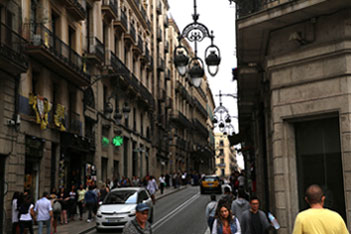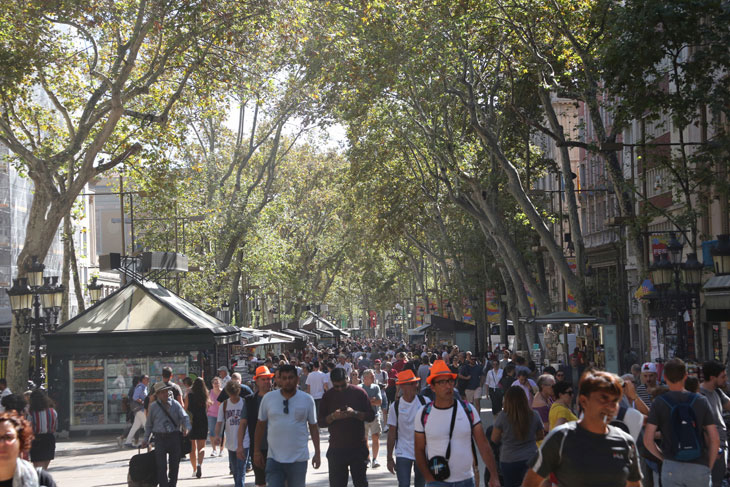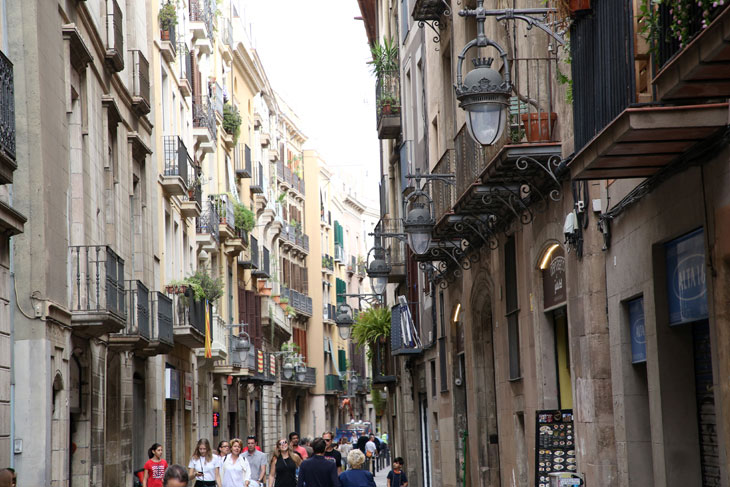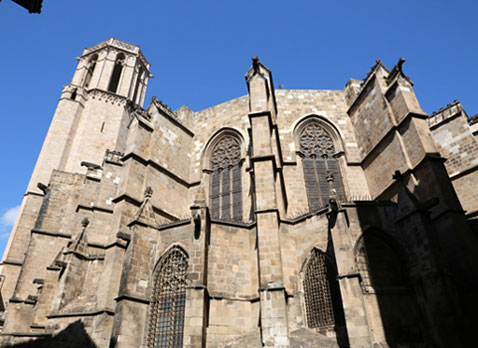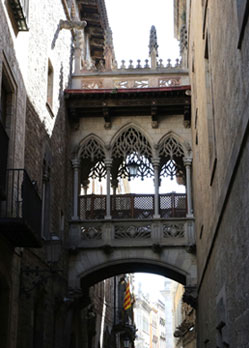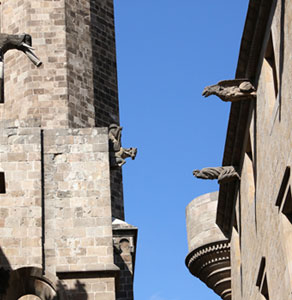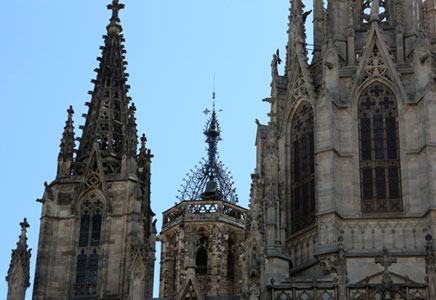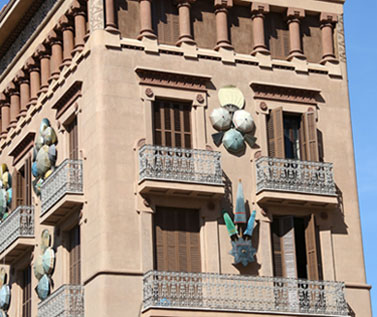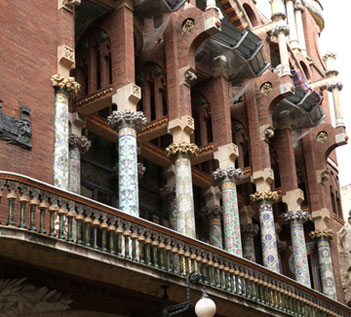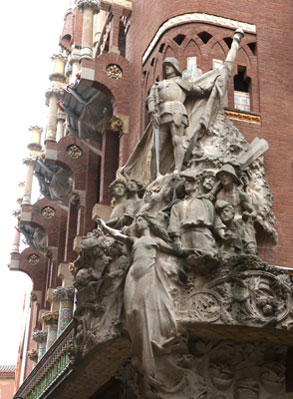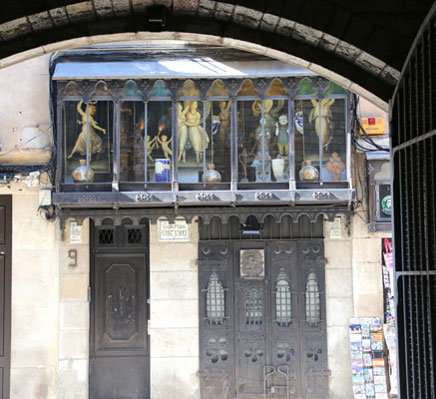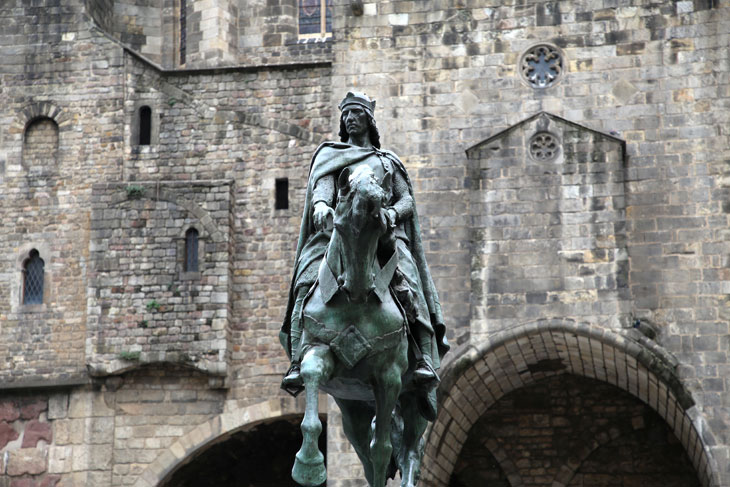Childhood Dreams
Barri Gotic
Our journey through Spain began in Barcelona where we stayed in the section of town called Barri Gotic
(The Gothic Quarter). This is the old part of the city, characterized by narrow twisty cobbled streets
which occasionally open out onto plazas packed full of people. We planned to visit a couple of museums
in the neighborhood, stroll La Rambla, and just generally enjoy the atmosphere.
We emerged from the metro into the plaza in the picture on the left below and wandered up the street
in the picture on the right to our hotel.
When I stepped out onto our little balcony, the building across the street seemed surprisingly close.
The plaza just up the street from our hotel was a fascinating place that was packed with people from early
morning until late at night.
The perimiter was lined by government buildings guarded by unsmiling soldiers and stores selling luxury items.
A sort of informal roundabout had been set up to force cars and scooters to turn around or go down a narrow alleyway
which opened off one side rather than proceeding directly across the vast expanse. Groups of protesters demonstrated
passionately against climate change or animal cruelty or advocated for the region to separate from Spain while tourists
took turns taking their instagram beauty shots and local and foreign nicotine lovers puffed away side by side. There was
always something interesting going on.
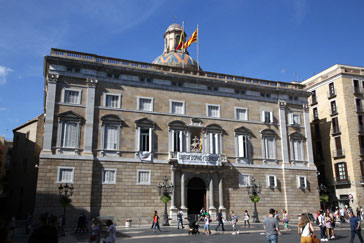
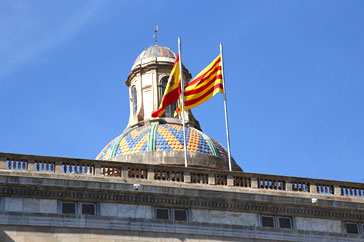
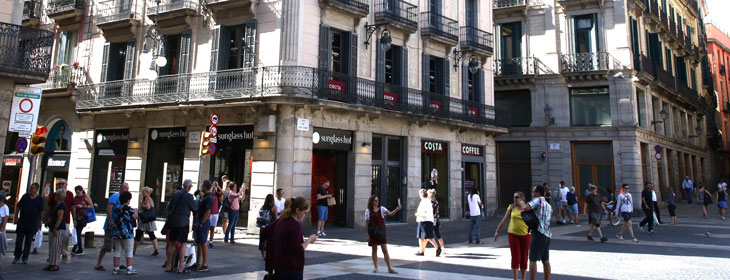
La Rambla, a much touted attraction, was a bit of a disappointment. I had looked forward to strolling the tree-lined
vehicle-free boulevard, but it was too packed with tourists to enjoy.
At first, I wondered why there were so many stands selling garden seeds and plants. Surely, they could not be in such
demand. When I looked more closely, I noticed that many of the packets of seeds had pictures of body parts on the
front and the plants were called things like penis peppers.
I had also dreamed of wandering through the large public market called La Boqueria, but the crowds were just too intense.
Many websites warn of an abundance of pickpockets in Barcelona, and the market looked like a great place for pickpockets
to be.
We wandered instead through the neighboring streets soaking up the ambiance.
The Pont del Bisbe (Bishop's Bridge) is pictured on the right below. Although it looks like it was built in Medieval
times, it was actually built for the Barcelona International Exposition which took place in 1929. In preparation for
the exposition, the Gothic Quarter underwent a massive transformation which included the restoration of existing buildings
and the creation of brand new neo-Gothic structures. The intent was to change the area from an uninspiring neighborhood to
a tourist attraction.
Many buildings boast decorations like the umbrellas on the one on the left below.
Below is a statue of Ramon Berenguer a Count of Barcelona in the 12th Century.
In Spain, city streets are crowded with people late into the night. One evening around 10:30 we were awakened
from a deep sleep by the sound of cheering people and beeping horns. I dashed to the balcony to see what was
happening, and saw hundreds of people on bicycles cycling past. They rode into the plaza, circled around several
times, and slowly dispersed.
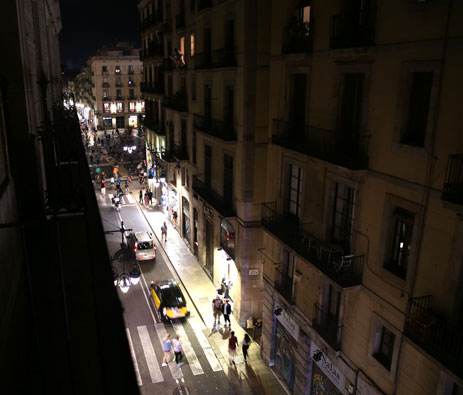
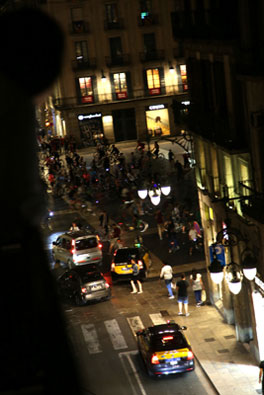
Although we enjoyed the food, it was difficult to adjust to the Spanish style of eating. Spanish people typically
enjoy a cup of coffee and a pastry for breakfast, indulge in a large meal in the early afternoon, and consume a
light dinner or an assortment of tapas at 8 or 9 PM. When we are traveling, we usually eat a substantial breakfast,
either skip or have a light snack for lunch, and go out for an early dinner. Eating an early dinner in Spain can be
difficult because many restaurants close after lunch and do not re-open until around 8 PM.
Our favorite place to eat in the neighborhood was the little restaurant right next door to our hotel. They
specialized in an assortment of tapas and variants of paella. The picture on the right below is their version
of the tomato bread you find everywhere - slices of toasted baguette rubbed with garlic, olive oil, and tomato
then sprinkled with sea salt.
Another popular tapa is crispy fried shrimp or chicken strips dipped in an ailoi sauce or a mild
wasabi sauce. What the Spanish really love, though, is thinly sliced dry cured jamon (ham) which is arranged on a
platter and served without further accompaniment.
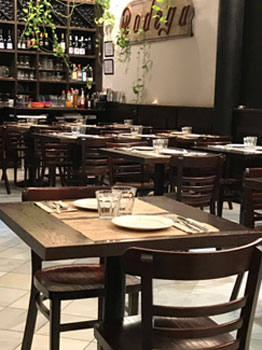
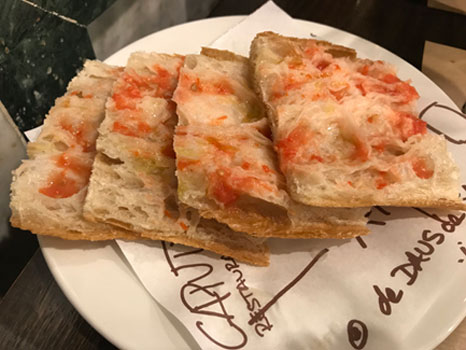
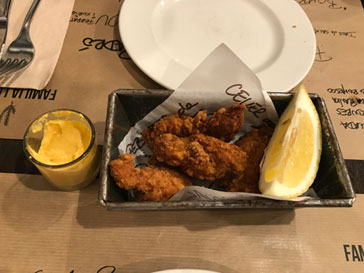
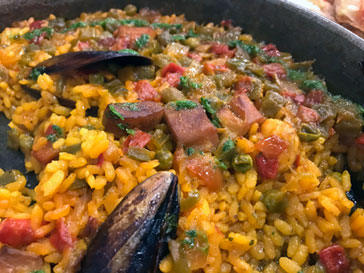
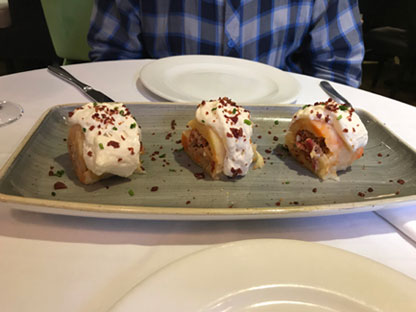
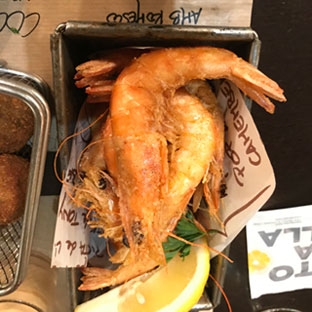
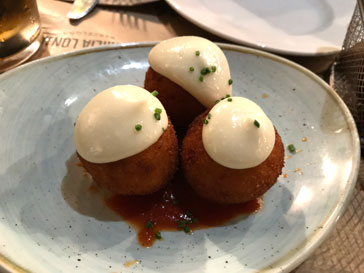
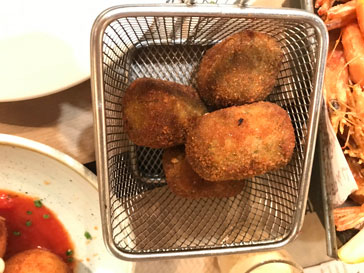
We were already beginning to realize that we had arrived in Barcelona at one of those "interesting" political
moments. One afternoon the clerk at the front desk urged Walt to avoid the plaza at 6 PM because a large demonstration
had been scheduled and no one knew what to expect.
I don't think anything happened at that demonstration, but we could sense the political discontent around us.

